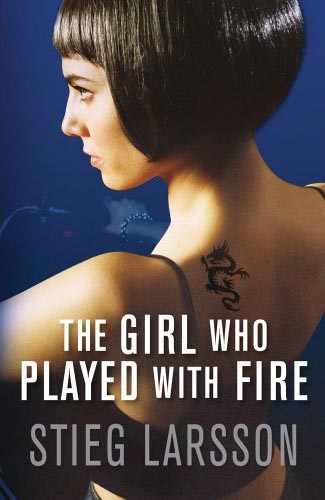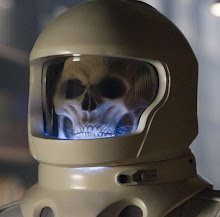
My first proper blog post was a review of The Girl with the Dragon Tattoo (you can read it here). Now I've just finished reading the sequel, and the second book in the trilogy, The Girl who Played with Fire, so I should probably give my thoughts on it.
The plot of the book, which I'll summarise quickly, is this; Mikael Blomkvist is doing well as the editor of Millennium Magazine, following the events of the first book, but when a freelance journalist writing an important article for the magazine is shot dead, Blomkvist is thrown into the centre of the investigation. And the prime suspect is Lisbeth Salander, an ex-private investigator and Blomkvist's old research assistant. Blomkvist must try and find Salander and prove her innocent - but will the police catch her first?
The first thing I will say about the book is that it is a lot more action-packed than the first one. While the trilogy is touted as a 'thriller series', the first book felt a lot more like a murder mystery, and I mentioned in my review that the action only starts proper more than halfway through. That wasn't the case with The Girl who Played with Fire, which has a lot more in the way of confrontations at gunpoint, brutal interrogations and fistfights. It actually feels like a thriller this time, which is great, and the faster pace of the book makes it a lot easier to get absorbed into the story; I spent quite a lot of my Saturday sat on the couch, reading in silence, wrapped up in the plot. There are a few moments in the book where the story starts to drag, but that's inevitable in such a large book; there are so many characters and mysteries and plot points, it would be near impossible to keep up the pace of the story for the whole novel whilst also resolving every loose thread.
Speaking of loose threads, another thing I mentioned in my last review was that the story seemed to leave several unresolved story points hanging, such as the subplot with Bjurman. I was glad to see that that subplot - and several other 'loose threads' - were picked up on in this installment. Having read the second book in the trilogy, it seems more obvious to me now that Larsson intended the trilogy to be one big story, told in three volumes, instead of three individual tales. Looking at it that way, it almost seems unfair for me to review the book when I haven't read the final story, The Girl who Kicked the Hornet's Nest - it would be like reviewing a book when you're only halfway through it. Needless to say that, while the story does come to a satisfying close, several plot strands and character issues have still not been addressed, presumably to be picked up in the final novel.
Yet another thing that I talked about in my first review (yes, there's more!) was how odd it was, that Salander was treated as the main character by the cover of the book, and the advertising, when in fact Blomkvist was far more prominent in the story. In this second novel, by comparison, Salander is hugely more important. Not only does the plot centralise around her, as she is on the run from the police, we also see a lot more of her. We get to know her more and learn a lot about her character and her back story, and that back story is actually a very big part of the plot. Blomkvist is still a main character, and we still spend a lot of time with him, but in this book (unlike the first) I really got the feeling that Salander is the 'hero' of the book. She's very effective as a character, with her intelligence and antisocial attitude adding a certain pizazz to every scene she's in. Most of the returning characters also feel very familiar, which makes reading about them a lot more interesting.
The one main problem I have with this book (which yes, you guessed it, I mentioned in my first review) is that the writing style is still very utilitarian, penned without flair or originality. It reminds me of reading a Dan Brown novel (a suitable comparison, considering how similar Blomkvist and Robert Langdon are), in that it's heavy on description but quite light on creative prose. However, in the book's defence, it was originally written in Swedish, and translated into English by somebody who wasn't the author, so it's entirely possible that Larsson's distinctive style was simply lost in translation - a point that, for the love of god this is getting old, I also made in my first review.
Bits and Bobs
- I've never been to Sweden, so I don't know if this is what it's actually like or not, but it's almost ridiculous how many characters there are whose surnames all end in the '-son' prefix. Erikkson, Svensson, Johansson, not to mention several different minor characters and one-off extras. It makes reading scenes with multiple characters almost laughable at times.
- The 'Best Quote' award goes to 'There were not so many physical threats that could not be countered with a decent hammer, Salander thought,' a line in which Salander contemplates the plus points of carrying a hammer round with her at all times. It is made all the more hilarious by the deadpan way it's delivered, as if the translator didn't see that it was a funny line.
- One point that confused me in the book was a discussion on hunting ammunition at the police station. Basically, hunting ammunition is a special kind of bullet that expands upon entering the victim, causing massive internal bleeding which makes death much more likely. The confusing line is 'But hunting ammunition is forbidden for use in war by international law, because a soldier hit by an expanding bullet almost always dies.' Again, I haven't researched it and I don't know if it's true or not, but if this quote is to be taken at face value - how do you 'forbid' certain types of weaponry in war? If two countries are going to war, they aren't going to use only certain, less lethal types of weaponry, are they? Moreover, how do you enforce the law? If, say, France went to war with Germany, and Germany started using hunting ammunition, what's everybody else going to do about it? Wage war on Germany as well? It's a confusing point.
Having said that, I probably won't be reading it or reviewing it for a while, because I've got a bit of a backlog of books to get through first, starting with Charles Yu's How to Live Safely in a Science Fictional Universe. I'm four or five chapters in now, and it's an odd book to say the least, but I'm enjoying it and I'll have a review up as soon as I'm done. I'm also probably going to start reviewing the new Torchwood episodes as soon as they come out. Only four days left until Series 4 starts, hurrah!
Thanks for reading, and bye for now!

No comments:
Post a Comment